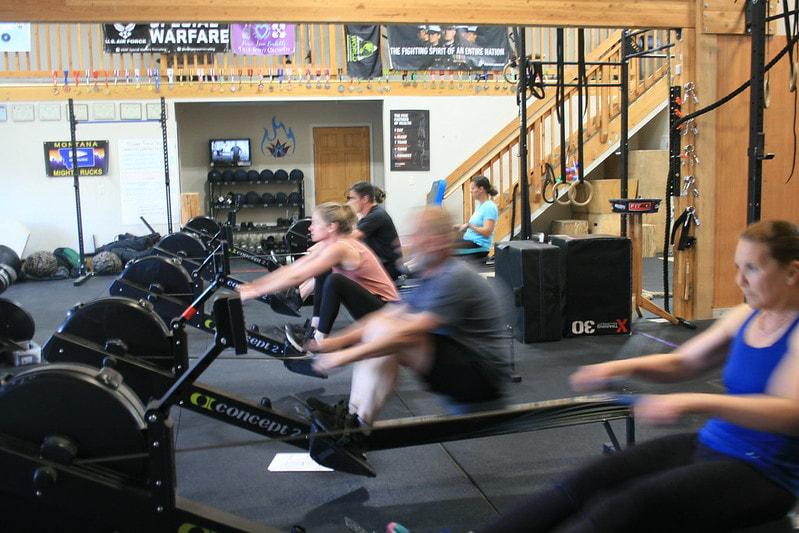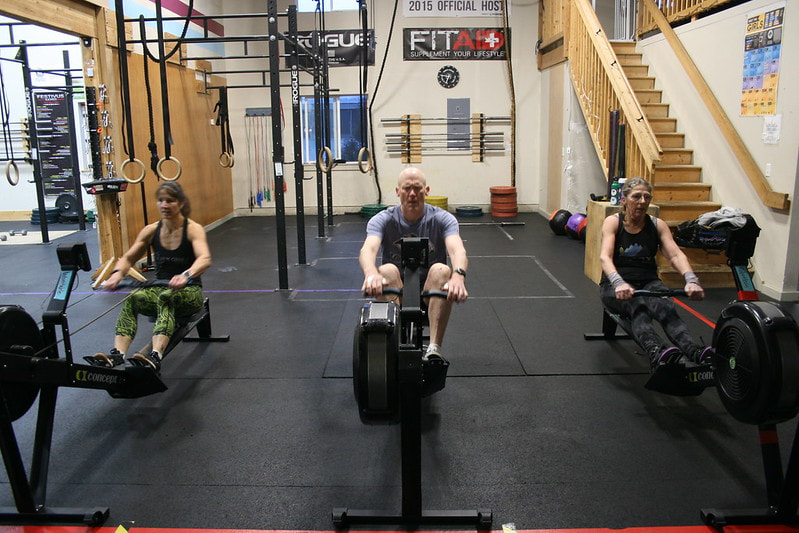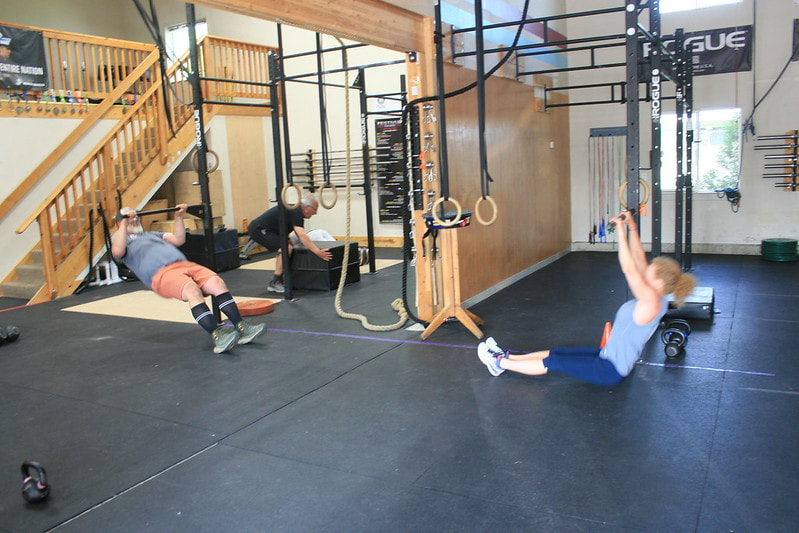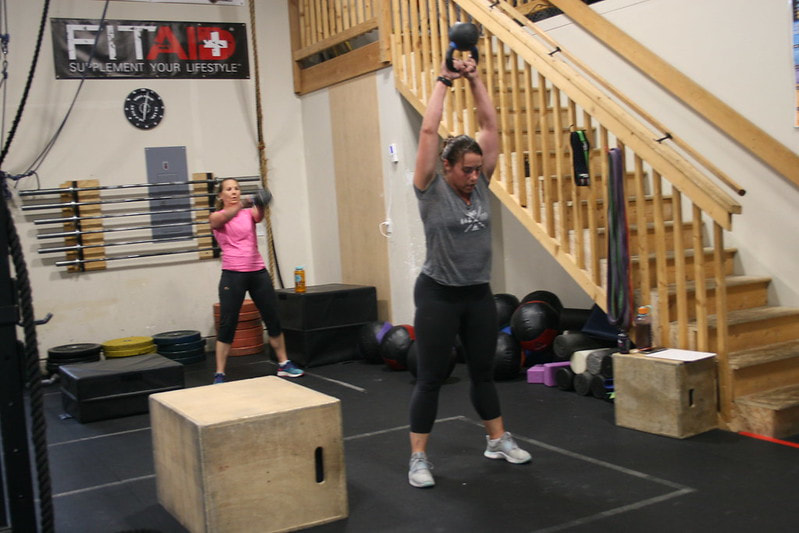|
Today, for Whoop Wednesday, I'm sharing a podcast with Whoop VP of Performance Kristen Holmes and Director of Analytics Emily Capodilupo who are joined by nutritionist Kassandra Hobart to take a deep dive into the science of calorie tracking. Kristen, Emily and Kassandra explore exactly what calories are and how your body uses them, as well as the difficulties that arise with trying to count them–both coming in and going out. They also discuss a recent update to the WHOOP app to improve the way we track your caloric burn, as well as some general tips for how to be smarter and healthier with the calories you’re putting in your body. 4:01 – What Exactly are Calories? “Calories are unit of energy,” Kassandra says. “They’re our fuel.” 4:26 – Basal Metabolic Rate (BMR). “Your BMR is your very basic energy need for living. Anything like breathing, digestion, etc. You need a certain level of calories to function. … Your BMR is really the best baseline so that we can calculate things on top of it.” 5:39 – Factors that Affect BMR. “Your height, your weight, your age, where you’re living, you’re environment, your epigenetics,” and more. 6:07 – How Does WHOOP Calculate BMR? “We currently calculate BMR as a function of age, your reported gender, your height and your weight,” Emily says. We’re excited to improve on this with PNOE integration and using cardio-metabolic analysis. 7:56 – 3 Ways We Burn Calories. BMR, the thermic effect of food (“It’s a lot of work to eat!”) and active burn, “the calories that you expend to do anything above the bare minimum.” 9:04 – Recent Update to Improve Calorie Tracking. “Most of the literature out there has actually only been developed by data collected on much higher heart rates,” Emily explains. We updated our algorithm to better reflect caloric burn when you’re less active. “We have this really big data set that we can look at and find these discrepancies that the studies miss.” 11:09 – Food Label Inaccuracies. “The error bar on the other side of the equation is way higher,” Emily points out, “the FDA requires that all food labels are within 20% of the actual amount of calories that they claim, and they don’t even enforce or police this requirement at all.” Plus, human error plays a big part. For example, two chefs at a restaurant may make the same salad very differently. “The more ingredients you have, the more likely that it’s going to be more imprecise with the calories, even if it is whole-food based,” Kassandra adds. “It also matters how it was cooked.” 14:50 – Does Weighing Food Work? “Counting calories is fraught with issues,” Kristen concludes. “Weighing does get you maybe a tiny bit closer to understanding what’s in your food, but as far as calories are concerned, you’d have to weigh each individual ingredient, and you’re still taking an average,” Kassandra says. “Also, what you’re eating is going to be different than what you absorb.” 16:09 – Overcoming Challenges of Calorie Counting. “I think that we need to get away from this quantity approach, and more look at quality,” Kassandra states. “One thing that is good about weighing and measuring food is that it gives you a better understanding of how nutrient-dense your food is.” 17:28 – Nutrient Dense Foods. “Even at a cellular level, it’s more important to have nutrient-dense food than it is to worry about being in a calorie deficit or surplus,” Kassandra says. “Let’s worry less about being precise on your calories in and calories out, and being more in-tune with your body.” 18:16 – Eating Slowly Matters a Lot. “Getting into this parasympathetic state is really important,” Kristen explains. “That’s one thing I love about WHOOP,” Kassandra adds, “you guys really do a good job of explaining and understanding how important that parasympathetic system is. … If we want to absorb more of our food, than we need to be calm when we’re eating it.” 19:27 – Rest & Digest. “You need to be chewing each bit like 10-15 times. … You’re going to feel better because you’re a little bit more balanced as far as what happens during digestion and absorption, especially of carbohydrates.” 21:14 – Microbiome. “When we’re eating more whole foods and eating them slowly, those good gut bugs are able to grow and help us absorb more nutrients.” 22:19 – Liquid Sugars. “When we drink liquids it’s a very different process than when we’re actually eating sugars,” Kristen says. Recent studies, A and B. 22:56 – Where Should Your Calories Come From? “A good rule of thumb is 30% of your calories from protein, 30% from fat, and 40% from carbs,” Kassandra suggests. “That’s before we look at any of the other factors or your goals, but that’s a good baseline to start.” 25:06 – Daily Goals. “Glycogen storages take up to 36 hours to replenish,” Kassandra points out. “If I have an athlete who’s running on Thursday, I want them to be increasing carbs and even some protein on Wednesday, even Tuesday.” 26:25 – Performance vs. Longevity. “What is your goal, and how important is it? … If it’s a lot of volume short term, I’m even less worried about the quality because I just need you to be so fueled and calorically ready for that particular event.” But, you have to understand the consequences of what might happen long term, Kassandra says. Emily gives the example of how runners’ “goo” makes sense in the moment, but not under regular circumstances. Conversely, it also doesn’t make sense to eat a salad while you’re running. 29:12 – Food Timing. “I’m going to eat foods that enable me to optimize whatever that behavior is that I’m doing,” Kristen says. 30:33 – Keto and Cognitive Health? “Right now we only know the short term of it,” Kassandra notes. “We don’t know the long-term effect of someone doing such a high-fat diet in the endurance world.” 32:18 – Sleep and Nutrition/Calories. “We have our athletes start a ‘power-down’ routine” before they go to sleep. “We don’t want have a lot of fat before bed,” that’s going to be hard to digest. Kassandra recommends cool food as opposed to hot food prior to bed as well. “If we don’t sleep enough, our body will start to look for that energy in other forms. In particular, it’ll crave junk food.” 34:53 – Leptin and Ghrelin (Hunger Hormones). “If you’re not sleeping well, if you’re not getting recovered at night that next day most likely your metabolism is going to be a lot lower too,” Kassandra explains. “You’re now going to crave things that you normally wouldn’t need or wouldn’t want. … Your REM and your deep sleep are so important for this.” 36:23 – If You Wake Up Hungry at Night? “That lets me know that we have to increase your calories, and carbs in particular. … A lot of times if you’re waking up in the middle of the night it’s because your muscles are trying to recover and they just can’t.” 38:55 – Big Takeaways. “The way that we’re counting calories at WHOOP is internally consistent … the trends are very reliable,” Emily says. “On both sides of the equation calorie counting much noisier than people appreciate.” Kassandra adds “Quality is just so important. Calories are a unit of fuel, we do need them. At the end of the day, we all need macronutrients.” And from Kristen, “Really try to get in that parasympathetic state when you are eating.” If you are interested in joining the dozen TSCF members on our on a Whoop journey, use my link to get your first month free. If you're already a Whoop user, join our True Spirit Whoop Group with the team code: COMM-AD6416.
0 Comments
How to Train and Sleep Based on Your Menstrual CycleOur True Spirit Whoop Group is growing! We now have 8 women in our Whoop group and I have seen other folks in the gym with Whoop straps. I started wearing a Whoop strap in July 2020 and have blogged several times about my experience. I'm super excited that more of you are interested in optimizing your health and performance with me. You can join our True Spirit Whoop Group with the invite code: COMM-AD6416 The Whoop strap is a wearable performance monitor that measures your strain (workout intensity), recovery and sleep. Sleep is BY FAR the MOST important RECOVERY tool we have. Sleep is when our muscles recovery from our workouts. It's the time when we release important hormones for recovery, muscle growth and immunity. I am BEYOND excited to share with you a podcast from the Whoop Women's Performance Collective. Whoop is leading the charge on performance research for women. Last year they launched a menstrual coaching feature that will help you learn how to harness the power of your hormones to improve your training and SLEEP! Listen to the podcast to learn how you can harness the power of your menstrual cycle to increase strength, manage stress and improve recovery. If you are interested in joining me on a Whoop journey, use my link to get your first month free. If you're already a Whoop user, join our True Spirit Whoop Group with the team code: COMM-AD6416.
How to Train and Sleep Based on Your Menstrual CycleOur True Spirit Whoop Group is growing! We now have 8 women in our Whoop group and I have seen other folks in the gym with Whoop straps. I started wearing a Whoop strap in July 2020 and have blogged several times about my experience. I'm super excited that more of you are interested in optimizing your health and performance with me. You can join our True Spirit Whoop Group with the invite code: COMM-AD6416 The Whoop strap is a wearable performance monitor that measures your strain (workout intensity), recovery and sleep. Sleep is BY FAR the MOST important RECOVERY tool we have. Sleep is when our muscles recovery from our workouts. It's the time when we release important hormones for recovery, muscle growth and immunity. I am BEYOND excited to share with you a podcast from the Whoop Women's Performance Collective. Whoop is leading the charge on performance research for women. Last year they launched a menstrual coaching feature that will help you learn how to harness the power of your hormones to improve your training and SLEEP! Listen to the podcast to learn how you can harness the power of your menstrual cycle to increase strength, manage stress and improve recovery. If you are interested in joining me on a Whoop journey, use my link to get your first month free. If you're already a Whoop user, join our True Spirit Whoop Group with the team code: COMM-AD6416.
I started wearing a Whoop strap in 2020 and have blogged several times about my experience. The Whoop strap is a wearable performance monitor that measures your strain (workout intensity), recovery and sleep. Whoop's mission of science and research is one of they key reasons I stay committed to wearing my Whoop over other wearable biometric devices. In fact, Whoop is dedicated to women's specific research and has created a Whoop Women's Performance Collective. Whoop is leading the charge on performance research for women! How cool is that? Today, for Whoop & Wednesday, I'm sharing a podcast with Whoop VP of Performance Kristen Holmes and Dr. Hazel Wallace, Whoop Scientific Advisory Council member, nutritionist, and trainer. They discuss Dr. Wallace's new book on female health and the importance of nutrition for performance and longevity. Are you a woman? Do you want to dial in your nutrition and performance? This podcast is worth listening to. You can click on the mp3 player below or you can go here to listen: https://www.whoop.com/thelocker/episode-198-dr-hazel-wallace-on-nutrition-longevity-and-womens-health/ Here are the key points from the podcast.
If you are interested in joining the dozen TSCF members on our on a Whoop journey, use my link to get your first month free. If you're already a Whoop user, join our True Spirit Whoop Group with the team code: COMM-AD6416.
|
Special EventsRecord your WOD on Beyond the Whiteboard.
Do you need CrossFit or yoga gear? Click on the links below to buy through our GORUCK, Reebok, Rogue or Affiliate share sale programs. These are affiliate links and our gym will be compensated if you make a purchase after clicking on these links.
Check out our Flickr page!
Categories
All
Archives
April 2024
|
True Spirit CrossFit
|







 RSS Feed
RSS Feed

